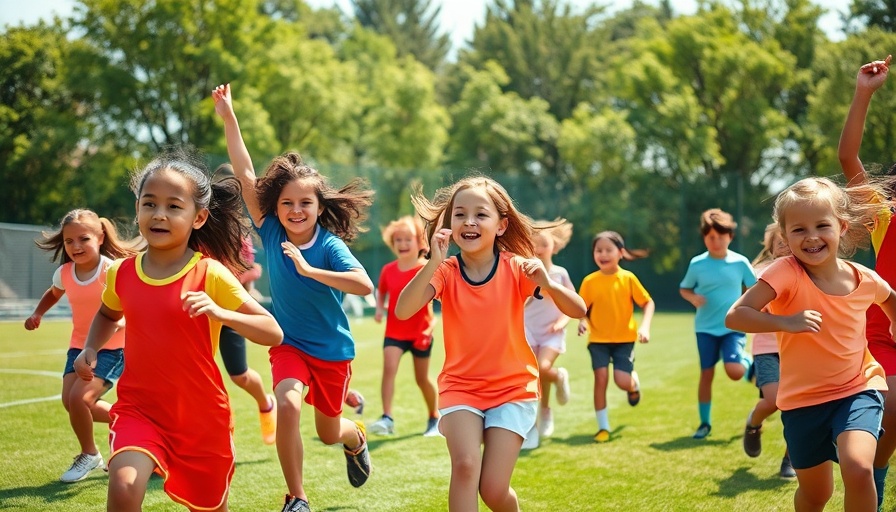
Cultivating Healthy Athletes: A Holistic Approach
Participation in sports plays a vital role in the growth and development of young adults. With over 30 million students engaging in organized sports, ensuring their physical and mental health is paramount. Tackling this issue requires a holistic approach that combines wellness solutions tailored for young athletes.
The Growing Concern of Student-Athlete Wellness
As children engage in sports, they face pressures and challenges that can impact their mental health. With statistics showing a 55.4% participation rate in sports among American students, parents must become advocates for their children's well-being. According to the Healthy People 2030 initiative, the goal is to have 63.3% of youth involved in organized sports, demonstrating a commitment to youth engagement and wellness.
Understanding the Mental and Physical Link
Experts emphasize the need for a balanced approach that prioritizes mental and physical health. Fiona Orlandella, a wellness expert, states, "Mental health and dietary habits must support growth and sporting excellence." This sentiment is echoed by injuries statistics, with over 3.5 million injuries reported annually, the most common being sprains and strains. A preventive approach, merging smart conditioning and nutrition, is vital for enhancing performance and reducing injury risk.
Nutrition’s Role in Athletic Performance
Ensuring adequate nutrition is critical in developing high-performing student-athletes. Orlandella emphasizes the importance of dietary wellness, particularly during puberty. Ignoring dietary needs can lead to negative outcomes, including hormonal imbalances and extreme weight loss. The focus should be on wholesome foods over restrictions, promoting a healthy relationship with food and fitness. Simple dietary adjustments, such as incorporating more fruits and vegetables, can significantly enhance an athlete's performance.
Addressing the Psychological Aspects of Sport
In addition to physical conditioning, mental focus plays a crucial role in athletic success. Experts like Sumi Epie point out that parents should be cautious about putting too much pressure on their children, which can affect their joy of sports. A balance is necessary—children thrive when they enjoy their activities and feel supported without being pushed excessively towards competition.
Implementing Effective Training and Injury Prevention
Combat training for martial artists, just like traditional sports training, requires attention to safety protocols. Preventative martial arts drills, injury mitigation techniques, and proper conditioning routines can significantly reduce the risk of injuries. By integrating flexibility training and recovery methods into martial arts, students can build resilience while maintaining peak performance. Also crucial are safety measures tailored to specific sports, which can enhance overall training conditions.
Future Trends in Sports Wellness
Looking ahead, the trends in youth sports indicate a growing emphasis on wellness and safety. To capitalize on the surge in youth sports participation, parents and coaches must prioritize safety. Programs focused on injury prevention and recovery are becoming essential. By adapting their approaches and addressing current challenges, communities can protect student-athletes and promote a culture of health.
As student-athletes embark on their journeys, supporting their mental and physical health through comprehensive training and dietary practices is vital. Understanding that these aspects are interconnected is crucial for fostering an environment conducive to athletic achievement.
Take Action for Your Child's Athlete Journey Today!
As the sports season begins, encourage your child to embrace a well-rounded program focused on safety, health, and enjoyment. Introduce preventative training drills and nutrition practices to ensure they thrive both physically and mentally. Investing in their wellness now lays the foundation for a healthier and more successful sports experience.
 Add Row
Add Row  Add
Add 




Write A Comment